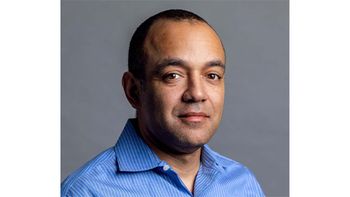
- Pharmaceutical Commerce - July/August 2017
Pharma’s cold chain is going below zero
Cellular and genetic therapies drive a ‘new paradigm’ for logistics
There is true excitement in the rapid pace of advances in cellular and genetic therapies—Kite Pharma, for example, one of the leaders in developing this science, has gone from concept to Phase III trials in 27 months, and an FDA approval is possible this year for one of its products. Dozens of other companies are pursuing targets in immuno-oncology, autoimmune disorders and a variety of rare diseases. Still with the wind at their back are a variety of stem cell therapies that continue to advance.
While all of this is generating high enthusiasm in R&D circles, logistics service providers are scrambling to revise their processes to meet the new demands of these therapies. A “new paradigm” is evolving, in the words of Bruce McCormick, president of Savsu, a logistics equipment and services provider, replacing what he calls “cold chain 1.0,” the traditional practices associated with shipping refrigerated (2–8°C) products.
This new paradigm is driven by two radical changes:
- The prevalence of cryogenic temperatures to ship and store living cells
- The need to make cell collection (often from individual patients) part of the drug-approval process, which in turn taxes parts of the healthcare system—hospitals, blood collection networks, infusion centers—with GMP responsibilities that are new to them.
A third factor—not unique to subzero pharma logistics, but arguably more consequential—is that there is no turning back once a frozen cell or biospecimen has improperly thawed. A point of reference: in April, Arctic ice cores stored at the University of Alberta thawed due to a freezer malfunction, ruining some part of the specimens representing millions of dollars of work and constituting an invaluable record of climatic history. More to the point: in 2012, 150 autopsied brains of autism patients stored at a Harvard biorepository thawed and were ruined; the director called the collection “priceless.” Potentially, a process upset like these at any point in cells going to or from patients undergoing cellular therapy could be a last chance at life.
“A reliable cell therapy development strategy is imperative to ensuring [the industry’s] biopharmaceutical products, therapeutic materials and patient biological samples remain viable from the point of collection to the final clinical site delivery,” reads a statement from Fisher BioServices, one of a number of service organizations preparing for the new technology.
It’s not industry vendors alone who are paying attention to the growing challenges. In Europe, the European Medicines Agency is struggling to develop a tailored regulatory system for what it calls “advanced therapy medicinal products” (ATMPs). There is pushback from the PIC/S organization, a non-governmental body focused on GMP policies and practices; it sees problems in a potential “loss of harmonization” between the conventional GMP policies it follows, and new ATMP regulatory scheme.
A research-oriented EU project is CARAT—Chimeric Antigen Receptors (CARs) for Advanced Therapies, which kicked off in January 2016 with a goal of integrating “novel cell manufacturing tools and enabling technologies into a new, comprehensive platform that will facilitate the safe, automated and cost-efficient manufacture” of CAR-T cells. The project has €6 million in EU funding, will last until 2020, and is being project-managed by Miltenyi Biotec (Bergisch Gladbach, Germany).
Fig. 3. Logistics-specific elements of the NCMC roadmap, and their developmental timelines. Credit: NCMC[/caption]
In the US, besides ongoing efforts at FDA Office of Cellular, Tissue and Gene Therapy within the Center for Biologics Evaluation and Research, a collaboration between the Georgia Institute of Technology and the Georgia Research Alliance, with support from the National Institute of Standards and Technology (NIST) has established a National Cell Manufacturing Consortium (NCMC). NCMC, in turn, has published “A Technology Roadmap to 2025,” to define manufacturing and supply chain needs. (Fig. 3) NCMC has a distinctly American slant: “The cell manufacturing community can facilitate the advancement and market penetration of next-generation cell-based medical products, and support the long-term growth and global competitiveness of the US cell manufacturing industry.”
In a like manner, the UK government, through its Innovate UK program, has supported the creation of a center of excellence, the Cell and Gene Therapy Catapult. Interestingly, it is headquartered inside a London, England hospital; there is also a manufacturing center currently under construction in Stevenage, just north of London. Its vision “is for the UK to be a global leader in the development, delivery and commercialization of cell and gene therapy.” In March, Fisher BioServices announced that it would locate units of its CryoHub setup there. CryoHub is a combination of storage and logistics handling systems, modularized so that it can be expanded from clinical through to commercial operations.
Meanwhile, the field is getting another momentum boost from a handful of IT vendors, such as the UK’s TrakCel and a GE-Mayo Clinic partnership, Vineti, both of whom are offering IT platforms not only to manage logistics processes, but also the internal manufacturing steps (customized to manufacturer requirements), and even the reimbursement and patient follow-up steps desirable for commercial viability of the technology.
In the freezer
Cryogenic (technically, under -180°C; we’ll use “subzero” to cover the entire range) processing is not new to pharma research labs and some healthcare processes: Biorepositories have been using liquid nitrogen (LN2, at -179°C) for decades, and there are various low-temperature refrigeration processes and equipment for subzero storage and shipping. Companies like Fisher BioServices, Chart Industries, Taylor-Wharton (now part of Worthington Industries) and Brooks Instrument, have been providing dewars (generally, a metal, double-walled container), freezers and related equipment for many years, used in biobanks, at in-vitro fertilization clinics and in research labs. (There is also a substantial industry around cryogenic air separation, liquefied natural gas, and cryogenic application in aerospace and electronics). Thermo Scientific, Panasonic and others sell mechanical refrigerator/freezers, which can reach temperatures as low as -86°C. When products or research materials need to be transported, a dewar containing liquid nitrogen or dry ice is customary.
Those dewars present two problems for routine, commercial-scale distribution of cellular therapy products: they can be big and bulky (the transportable units are generally more than 50 lbs.); and they are prone to tipping over, which can cause LN2 vapor to leak out more rapidly, cutting into the stable temperature range of the device. Savsu, which has been providing reusable containers for 2–8°C shipping for years, is addressing both of these concerns with the just-introduced “evo DV” line (Fig. 2), which has redesigned dewars equipped with what it calls a Smart Cap top (to make the device relatively immune to tipping complications), and in a range of sizes that are manageable. “If you think about a cellular therapy provided to a patient at a hospital, you need to consider where and how the drug is going to be warmed prior to administration,” notes Savsu’s McCormick. “If it’s at bedside, you’d need a forklift to deliver a conventional dewar and that’s not going to happen.”
Another logistics problem with conventional dewars is that it takes upwards of 24 hours to load them with LN2 and stabilize the container’s temperature. The DV device is said to cut this to less than an hour. The unit can be specified for -196, -80, and 2–8°C operating temperatures.
Another player that has targeted cellular therapies specifically is Cryoport, which has offered a tailored LN2 shipping container for a number of years. The company has expanded its offerings to include the SmartPak II condition-monitoring system. Smartpak starts with a communications-enabled (Wi-Fi or cellular) datalogger, which transmits data through the Cryoportal, a website where Cryoport or its clients can monitor a shipment. Cryoport works with a variety of carriers, but also has arrangements at multiple airports to replenish LN2 if necessary, with dedicated depots at Rotterdam, Singapore and Irvine, CA, its headquarters.
Mark Sawicki, chief commercial officer at the company, says that a number of clients are now requesting Cryoport to collocate a shipping center at their sites; the service would entail preparing containers for shipment, packaging the product and managing the logistics processes to ensure safe delivery. He also touts the company’s customized shipping containers: “In some cases, we take a commercial package and make as many as 50 modifications to it, providing better locking mechanisms, our datalogging and condition-monitoring technology, and other improvements,”
he says.
The company’s most recent announcement is CryoStork Next Flight Out, a branded service specifically for IVF centers (Cryoport says that as many as 400 IVF clinics make use of Cryoport services). CryoStork will handle sperm, eggs, embryos and reproductive health tissues, according to the company, with global delivery.
Another service, about to be announced, expands Cryoport’s offerings to the 2–8°C refrigerative world. Sawicki says that it is typical, in applications such as CAR-T therapy with autologous T-cells from individual patients, to collect the T-cells via apheresis, and to ship that blood component under 2–8°C conditions. The return trip of the treated cells is performed cryogenically. “Adding the 2–8°C service enables us to provide a closed-loop service to clients,” he says. Cryoport has partnered with Pelican BioThermal to make use of the latter’s Credo line of cold-chain containers, which feature vacuum insulated panels and specialized gels as a source of cold.
Pelican BioThermal has developed a range of phase-change materials (PCMs) that can be effective in ranges as low as -40C. There are products, such as vials with rubber stoppers, that need to be kept within a lower and upper limit, even in the subzero range; Pelican’s PCM expertise enables them to meet this need. The main goal is to sidestep the use of dry ice, which has limitations in air freight (since it’s regulated as a “dangerous good”). Bill Mayer, director of research there, also makes the point that better insulation (such as the vacuum panels that Pelican uses) can also make PCMs viable in subzero regimes relative to dry ice.
Tricky scheduling
Sawicki and others in the field point out the extraordinary demands cellular and related therapies put on traditional pharma logistics practices. Autologous therapies (using the patient’s own cells) must, of course, be tracked precisely to and from the patient; on the other hand, allogeneic therapies (which includes a number of stem cell approaches) are a “one to many” process where one source of cells might treat multiple patients—but the same tracking details need to be preserved. Some proposed cancer treatments require both the patient’s T-cells and biopsied tumor tissue. A further complication is that the re-infusion of the cells in the patient is dependent, in part, on the health and well-being of the patient; while the extraction and initial processing might proceed rapidly, once the treated cells are cryogenically stored, the re-infusion can be scheduled at an appropriate time.
There is considerable variation in the sub-zero temperatures called for in clinical protocols: -40, -60, -79 (the transition point of dry ice) and -196° all show up in cellular therapy literature. Much of this appears to come simply from traditional lab practices to the preferred, modern modality—LN2 at -196°C, where nearly all cellular activity ceases. Most logistics processes depend on maintaining one set of standard conditions; the variety of temperatures involved here is one of the reasons that specialized life sciences logistics services are desirable.
“There’s considerable debate about suitable temperature ranges,” says Savsu’s McCormick. “A big part of this is the transition from clinical practices to commercial-level activity,” he says.
Cryogenic freezing and thawing are performed gradually to prevent shocks to the living cells; but whether slow or fast, cryogenics usually calls for use of a cryopreservative to minimize freeze-thaw damage. BioLife Solutions is one company that has taken a proprietary position on cryopreservation, with two products, CryoStor (for the -70 to -196°C regime) and HypoThermosol (for 2–8°C). The products contain (among other components, some of which are trade secrets) dimethyl sulfoxide (DMSO), which has been a common cryopreservation agent for many years. Many researchers have “home brew” preservatives with little in the way of rigorous analysis or consistency—problems that BioLife is seeking to address with its products.
“Cryopreservatives minimize damage from ice crystals forming during the freezing phase; when these cells are thawed, they have near immediate need for pH buffering, free radical scavenging and providing a source of energy for the cells,” explains Mike Rice, CEO of BioLife. BioLife’s products are regulated essentially as excipients, he says; and because they have been written into more than 100 clinical protocols they could eventually become part of formal drug applications. From that, BioLife expects to generate revenue as it supplies the preservatives as essential ingredients.
Rice says that cell viability, a critical measure of a therapy’s potential efficacy, varies all over the lot in clinical trials being conducted currently; a rough measure is that 20–50% of cells lose viability during freeze-thaw transitions. Using cryopreservatives like BioLife’s can cut that to below 20%.
BioLife and Savsu formed a joint venture in 2015, biologistex, to handle the courier-based or freight-forwarding operations of their clients. The service makes use of Savsu’s evo Cold Chain 2.0 platform for data collection, monitoring and quality control.
IT advances
Arguably, the clearest indication of how different cellular therapies are shaping up, relative to conventional drug development, is that there wasn’t a ready-made IT platform to manage production and distribution processes. Researchers are accustomed to working with clinical trial management systems (CTMS) and laboratory information management systems (LIMS); plant managers have used manufacturing execution systems (MES) or extensions of enterprise resource planning (ERP) for years. But the scope of cellular therapy, involving steps at a healthcare facility (apheresis or other cell extraction), advanced genetic manipulation of cells (and cell proliferation), re-infusion, and all the logistical steps in between, don’t fit any of these IT platforms. Business managers looking at eventual commercialization have realized that the need for monitoring outcomes of individual patients—and how that could become an integral part of a value-based reimbursement for the therapy—should also be digitized.
TrakCel, which has been operating since 2012, has coined the term “Cellular Orchestration Platform” (COP) to characterize this broad foundation. “There are many stakeholders to bring together in a cellular therapy project; and some of those stakeholders follow lab-based protocols, others, good manufacturing practices (GMPs), and yet others in health-related procedures,” notes Martin Lamb, EVP at the Cardiff, Wales firm. “All of this has to come together in a tight scheduling framework.”
TrakCel’s product is cloud-based, and while it encompasses a variety of specific functions (such as data collection during logistics processes), it is also built with interfaces to enable data transfer from lab, manufacturing and other IT systems. For a client, the company maps out a customized flowchart of necessary processes, combined with the necessary interfaces. Some risk-based contingency planning is also enabled; for example, a patient might require preparatory treatments before a cell-extraction process is carried out; ensuring that these steps are carried out is accounted for in the system.
TrakCel looks like it’s about to get some head-to-head competition from a joint venture between General Electric Healthcare and the Mayo Clinic, Vineti (which changed its name from Vitruvian at the beginning of the year). Like TrakCel’s approach, Vineti also encompasses healthcare-facility steps, manufacturing and reimbursement (see Fig. 4). In some yet-to-be-determined fashion, Vineti will also tap into GE’s storehouse of manufacturing knowledge, as well as resources tied to other parts of GE Healthcare, and Mayo Clinic’s experience in biomarker development, cell therapy processes and outcomes.
Save
Save
Save
Articles in this issue
over 8 years ago
Pharmaceutical traceability stumbles aheadover 8 years ago
Managing employee training at the enterprise levelover 8 years ago
Digital factory transformation beyond serialization complianceover 8 years ago
Blockchain: the technology to make DSCSA work after 2023?over 8 years ago
Besse Medical acquires Podisover 8 years ago
DHL opens a cold-chain center of excellence in Irelandover 8 years ago
Construction starts on a Pfizer biopharma plant near St. Louisover 8 years ago
Looking ahead in life sciences and healthcare logisticsNewsletter
Stay ahead in the life sciences industry with Pharmaceutical Commerce, the latest news, trends, and strategies in drug distribution, commercialization, and market access.





